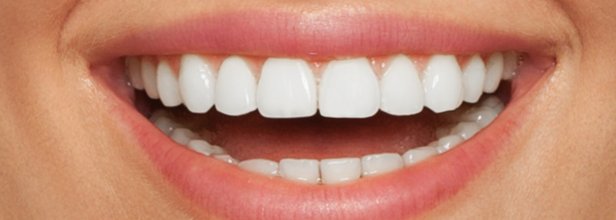
(Credit-Canva)
Are ‘Microbreaks’ The Answer To Long Working Hour Fatigue?
Work can often become overwhelming, you have multiple tasks to complete, meet deadlines, make sure your schedule is managed well, and ensure you are punctual. While it might be similar for most corporate employees, not everyone is able to cope with a hectic schedule and taking breaks is a good solution for this.
However, in this competitive world, it can be difficult to take breaks without raising eyebrows, so does that mean you cannot work efficiently? No, but you can try microbreak!
Microbreaks are short, frequent pauses in your day. They help you avoid sitting for too long- these breaks can be less than a minute or up to 10 minutes. The idea is to give your muscles rest, especially when doing repetitive tasks. Such short breaks will help you detach from feeling overwhelmed or stressed short without interrupting your workflow.
How Often Should You Take Breaks Between Work?
Experts recommend taking 2 to 3 minutes break every 20-30 minutes during the day. For better heart health, studies suggest taking a 5-minute break every 30 minutes is recommended. This means 25 minutes of work, followed by 5 minutes of activity. Microbreaks do not have to be always planned out, it can be something as small as taking a stroll from one part of the office to the other. You can also do stretches, breathing exercises or enjoy a light conversation. Here are some benefits of taking microbreaks:
Less Muscle Pain
Short breaks can ease muscle stiffness from sitting. While more studies are needed, I found my chronic shoulder and back pain lessened. Regular movement helps prevent prolonged discomfort.
More Energy
Quick activity breaks can fight fatigue and boost your energy. Active breaks, like walking or stretching, are more effective. I felt a noticeable increase in my energy levels throughout the workday.
Better Focus
Microbreaks improve focus, especially for routine tasks. Complex tasks might require longer breaks. Short pauses refresh the mind, helping you stay alert and productive on less demanding work.
Improved Mental Health
Even brief breaks can lower stress and enhance mental well-being. Taking a few minutes to step away from work helps clear your head and reduces feelings of overwhelm.
How to Make Microbreaks A Daily Habit?
While microbreaks can be beneficial, they could also potentially disrupt workflow, making it hard to pause when deeply focused. Microbreaks may also lead to refocusing challenges, especially for those who have difficulties with attention. Plus, fitting them into your busy schedule, particularly with meetings, can be problematic.
To make microbreaks a regular habit, set reminders and keep things interesting by varying your activities. Create an activity list, choosing breaks that match how you feel at the moment. Try to stick to your schedule but be flexible; missing a break occasionally is okay, just keep trying. This could be a great new addition to your workspace and help you find new momentum.

Declared Cancer-Free, Woman’s Cancer Returns And Spreads To Brain During Pregnancy- She Urges Others 'To Push' For Tests
In a heartbreaking yet urgent reminder of the gaps that can exist in cancer follow-ups and survivorship care, a 38-year-old mother from Kent, England is now battling stage 4 brain cancer after being repeatedly assured by her doctors that she was cancer-free. Kelly’s fight with melanoma began in 2017, when she noticed a strange dark line on her fingernail. Though it may seem like a minor cosmetic issue to many, it became a life-altering clue. Medical professionals initially failed to find any cancerous cells but advised her to monitor it. As months passed, the line thickened, prompting a diagnosis of melanoma that eventually led to the amputation of her fingertip in 2020.
Despite the severity of the diagnosis, Kelly was repeatedly reassured that her cancer was in its earliest form—classified as stage 0 and therefore considered "non-spreadable." But Kelly wasn’t convinced. She requested additional scans to be safe. Her pleas were dismissed.
“I wish I had been that annoying patient who kept going,” she now says.
In 2022, Kelly’s worst fears came true. A lump appeared in her armpit, confirming that the melanoma had spread to her lymphatic system. The finding drastically altered her treatment path—she underwent surgery to remove 20 lymph nodes and later received aggressive immunotherapy.
By October 2023, she was told her scans were clear. In April 2024, Kelly was officially in remission. Two weeks later, she found out she was pregnant with her fourth child.
It was a joyous moment—but it wouldn’t last long.
At 35 weeks pregnant, Kelly experienced a seizure that led to an emergency hospitalization. Doctors performed a scan and delivered devastating news: the cancer had spread to her brain. She was now facing terminal, stage 4 brain cancer. Within days, she delivered her baby via C-section and soon after, underwent brain surgery to remove a tumor.
“The surgeons had to leave part of the tumor because removing it entirely would have caused permanent paralysis on my left side,” she explained. “That’s why I’ll now undergo targeted radiotherapy.”
Kelly’s case challenges the traditional protocols of cancer remission, underscoring a critical truth: clear scans are not always a guarantee that the disease is gone.
Kelly’s story is filled with poignant what-ifs. She wonders what might have been different if doctors had acted on her earlier concerns or if they had performed the scan she had begged for after her fingertip amputation.
“I don’t think I’ve fully accepted that I have terminal cancer,” she admits. “There’s a 50 percent chance the new immunotherapy treatment will work, but it’s hit or miss. It’s terrifying.”
Her words speak volumes to cancer survivors worldwide who often experience anxiety and lingering doubts even after receiving an all-clear.
One disturbing aspect of Kelly’s experience is the persistent dismissal of her concerns by medical professionals. What she experienced is now widely recognized as medical gaslighting—a phenomenon where patients, especially women, are told their symptoms are “in their head” or “not serious.”
Whether due to systemic issues, implicit gender bias, or pressure to limit costly imaging, patients are too often discouraged from advocating for themselves.
Healthcare experts argue that self-advocacy should be seen not as a nuisance but as a necessity. “Any doctor who won’t help you search for answers when you're suffering isn’t a good doctor,” said a leading U.S. oncologist when asked about cases like Kelly’s.
Kelly Heather’s story isn’t just a personal tragedy—it’s a public health warning. Her plea to the world is simple but powerful: “Do more tests.”
She wants women, in particular, to realize that being proactive can mean the difference between life and death. Even when scans appear clear, symptoms or gut instincts shouldn't be ignored.
As science advances, survivorship care must also evolve—from one-size-fits-all follow-ups to more personalized approaches, especially in patients with previous late-stage cancers.
Why Women Should Push Doctors for More Tests?
Medical experts increasingly agree on a vital truth: women must trust their intuition when it comes to their health and push for more thorough diagnostic care, especially in complex or recurring conditions. Historically, women’s symptoms have been downplayed or misinterpreted, often leading to delayed diagnoses in conditions ranging from autoimmune disorders to cancer.
In the case of cancer, remission doesn't always guarantee eradication. Sometimes, rogue cancer cells escape detection and resurface in more aggressive forms—something Kelly Heather’s story painfully illustrates. Pushing for extra scans, follow-ups, or second opinions shouldn’t be viewed as paranoia; it should be considered a smart, preventive measure.
Women are also more likely to be dismissed when they express concern over subtle or unexplained symptoms. Persistent fatigue, body pain, or changes that don’t feel “normal” deserve full attention and clinical investigation.
You know your body best. If something feels off—even when tests say otherwise—it’s your right to question it. Don’t settle for “wait and see.” Whether you’ve survived cancer or are just concerned about unusual symptoms, insist on getting the tests and answers you need. Your voice matters, and it could save your life.

Credit: Canva
'Never Thought It Will Happen To Me': Ozempic Causes Osteoporosis In Woman
A 30-year-old woman recently revealed a shocking side effect of Ozempic that has left everyone worried. Taking to Instagram, Avery shared that after taking the popular weight loss drug for a year, she was diagnosed with osteopenia and osteoporosis, which causes the excessive loss of bone density. Her news has sparked a debate against the abuse of weight-loss drugs and their long-term effect on one's health.
Avery admitted to using Ozempic as part of her struggle with an eating disorder and getting the medication without a doctor's prescription. She said she deeply regrets using it and advised others to watch out. "I am in kind of a shock right now because I never thought this," she posted through her tearful message. "Ozempic can cause bone loss of density, and I never thought that this was going to happen to me because I was only taking it for a year. I have osteoporosis and osteopenia. Ozempic is very easy to get nowadays, and people all over are getting their hands on it. But don't do it. I messed up. Please learn from my mistake."
Weight Loss Drugs Linked To Low Bone Density
Clinical research has associated the use of GLP-1 receptor agonists, such as Ozempic, with bone density loss. A JAMA Network Open Study confirmed that patients taking liraglutide had lower bone density than those who did not. The participants—aged 18 to 65—were randomly split into four groups for one year: one that exercised and received a placebo, one that received just a placebo, a group that received Novo Nordisk's weight loss drug liraglutide and another group that received liraglutide and exercised. Liraglutide, like Semaglutide (Ozempic) is a GLP-1 angonist but less dense.
A trial of 195 adults with obesity found that glucagon-like peptide-1 (GLP-1) receptor agonists, a class of drugs used to treat diabetes, resulted in reduced hip and spine bone mineral density when used without exercise compared to a placebo or exercise alone, researchers said.
Does Ozempic Have Side Effects?
As reiterated by doctors and health care experts, Ozempic is a drug that is tasked to help diabetic patients manage their blood sugar levels and weight. However, recent research has shown its effectiveness in mitigating various addictions like alcohol and drugs by inhibiting hormones. But what people ignore are its side effects, which include:
Nausea is a frequent side effect, especially when starting Ozempic or increasing the dose, and vomiting may occur along with nausea.
Diarrhoea and abdominal discomfort also show up in people using Ozempic, but they generally resolve as your body adjusts.
Ozempic can reduce appetite but may also lead to unintended weight loss or reduced food intake, causing discomfort for some people.
There are certain less common, but serious side effects also, like Pancreatitis, or inflammation of the pancreas.
This drug may also cause severe kidney issues, particularly if dehydration occurs from side effects like vomiting or diarrhoea.

Credits: Canva
Can Drugs Regrow Teeth? Scientists Thing They Can
Japanese scientists are now testing a new drug that could possibly allow people with missing teeth to grow new ones. This could be a groundbreaking research which would offer hope for a natural alternative to dentures and implants.
So, What Really Is The Science Behind Tooth Regeneration?
Unlike reptiles and fish, who can regrow their teeth throughout their lives, human and most mammals are believed to grow only two sets of teeth. However, a research led by Katsu Takahashi, who is the head of oral surgery at the Medical Research Institute Kitano Hospital in Osaka, humans may also have dormant buds for a third set of teeth hidden beneath their gums.
Takahashi's team has therefore launched clinical trials at Kyoto University Hospital in October, administering an experimental drug which was designed to activate these dormant tooth buds. The researchers are now hoping that this treatment will restore natural teeth and eliminate the need for prosthetics, which are often costly and invasive.
How This Drug Works?
The drug targets a protein called USAG-1, which has been shown to suppress tooth growth. By blocking this protein, researchers believe they can trigger the development of new teeth. Studies on mice and ferrets have already demonstrated successful tooth regeneration, with lab images confirming the growth of new teeth in these animals.
A study published last year by Takahashi’s team confirmed that their "antibody treatment in mice is effective for tooth regeneration and can be a breakthrough in treating tooth anomalies in humans." The ongoing clinical trials will determine whether this success can be replicated in humans.
Who Could Actually Benefit From It?
As of now, the research is currently focusing on people with congenital tooth loss. This means people who have a hereditary condition that affects approximately .1% of people. These people are born missing six or more permanent teeth, which can make chewing difficult for them. It can also impact their confidence. Many in Japan wear face masks during adolescence to hide the gaps in their mouths, explained Takahashi.
"This drug could be a game-changer for them," he said. The team aims to make the drug available to children with this condition by 2030, offering a revolutionary solution to those who struggle with missing teeth from an early age.
What Others Are Doing About It?
There is indeed a global race to regrow teeth. The research has also sparked global interested with Angray Kang, a dentistry professor at Queen Mary University of London nothing that only one other team worldwide is pursuing a similar goal, using antibodies.
"I would say that the Takahashi group is leading the way," Kang told AFP, emphasizing that the approach is "exciting and worth pursuing." He noted that a similar antibody drug is already being used to treat osteoporosis, adding credibility to the concept of targeting USAG-1 for tooth regeneration.
However, experts caution that while animal studies have been promising, human trials may present unforeseen challenges. Chengfei Zhang, a clinical professor in endodontics at the University of Hong Kong, called Takahashi’s method "innovative and full of potential" but warned that "outcomes observed in animals do not always directly translate to humans."
© 2024 Bennett, Coleman & Company Limited

